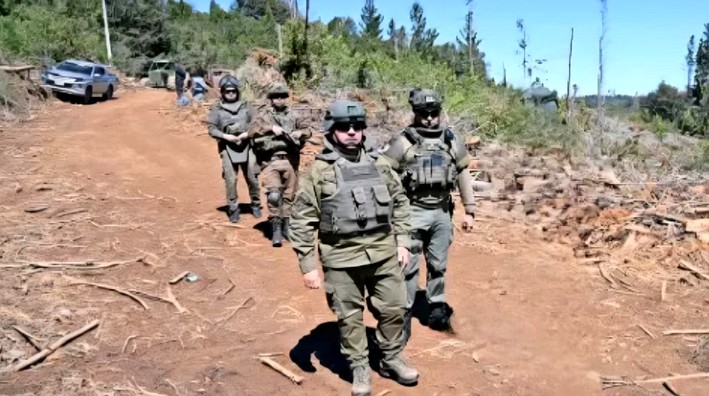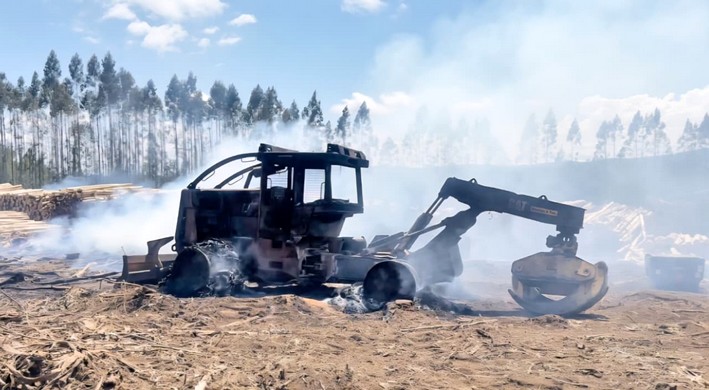During the first month of 2025, 3,069 fires have occurred, suggesting an 18% increase
Conaf presented to deputies the analyses of the wildfire situations so far this year, as well as the preparation of firefighters and the costs associated with the incidents.
The National Forestry Corporation presented its wildfire protection plan to the Emergency, Disaster, and Firefighters Commission. The entity displayed a series of data and images collected from the fires that have affected the national territory, along with their respective analysis for improved firefighting. The session was attended by Conaf's executive director, Aída Baldini, along with manager Jorge Saavedra and prosecutor Daniel Correa.
First, the manager's presentation began with a national assessment, where climate change plays a significant role in the genesis and spread of fires. Alongside this, he mentioned the concept of a "catastrophic fire," which refers to an incident that exceeds technical control limits, with unpredictable behavior and rapid spread.
He also noted that various analyses obtained from disasters in Chile have been highly useful for fighting fires in other places, such as Los Angeles, USA. In fact, he reported that the entity has worked jointly with foreign firefighters to gather more data.
In numbers, during the first month of 2025, 3,069 fires have occurred, suggesting an 18% increase compared to the same date last year. However, these fires have consumed 14% less land area compared to 2024. Additionally, it was noted that despite the increase in incidents, 91% of them were extinguished before consuming more than five hectares.
Later, the director presented a series of data related to available equipment, machinery, and firefighters. In this regard, she emphasized that the aircraft contracted daily by the state are more expensive than those of Conaf. For example, while a corporation helicopter costs between $2,000 and $2,500 per hour, those from Senapred cost between $3,000 and $3,500.
Furthermore, she outlined the main causes of wildfires: 66% are caused by negligence, 25% are intentional, and 7% are accidental. Additionally, 0.4% are due to natural causes, and 2% correspond to undetermined causes.
Parliamentary inquiries
Deputy Ricardo Cifuentes (DC) was impressed by the percentage of intentionality and negligence in wildfires. He asked about the mechanisms Conaf has to prevent this and whether there are legislative avenues to penalize such behavior. The corporation's leader mentioned that, for the first time, those causing fires due to negligence are being imprisoned. Currently, 50 responsible parties have been detained.
She also stated that a wildfire prevention law is being processed, which will allow for interface and buffer zones. Along with this, a national risk map will require firebreaks and preventive measures against fire disasters.
Later, Deputy Karen Medina (IND) inquired about the conditions and preparation of firefighters, following the tragedy of three firefighters who died battling a wildfire in Los Sauces. Baldini stated that physical and psychological tests are conducted for recruitment, selecting the most suitable candidates. She also mentioned that brigade leaders are chosen after multiple firefighting seasons and experience.
Finally, the commission's chair, Deputy Marcela Riquelme (FA), asked about the request for Senapred aircraft for fires, in relation to the mentioned costs, as well as performance across regions and whether any require reinforcement.
Regarding these points, Conaf's director responded that aircraft are only requested during red alerts, meaning when there is a risk to homes and people. As for regional performance, the collected data and analyses show that regions generally perform well.
The commission reiterated its invitation to Conaf officials for the first session in March to continue reviewing these matters.

















